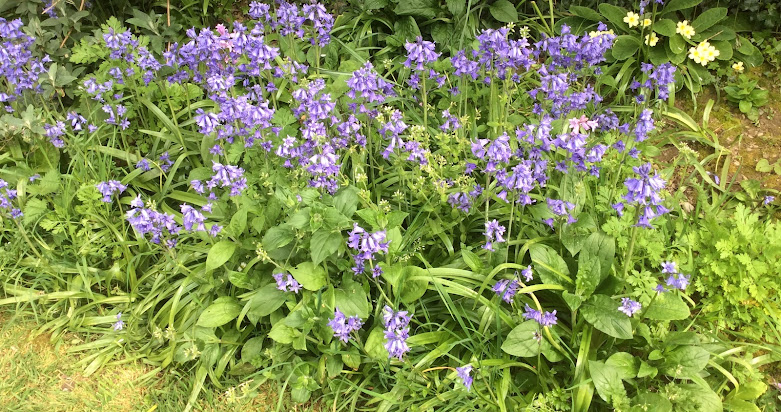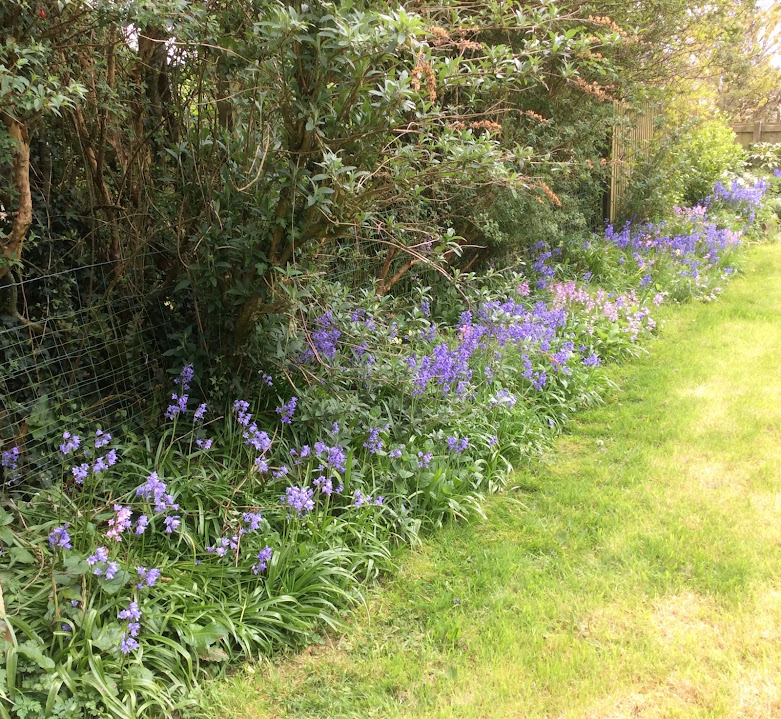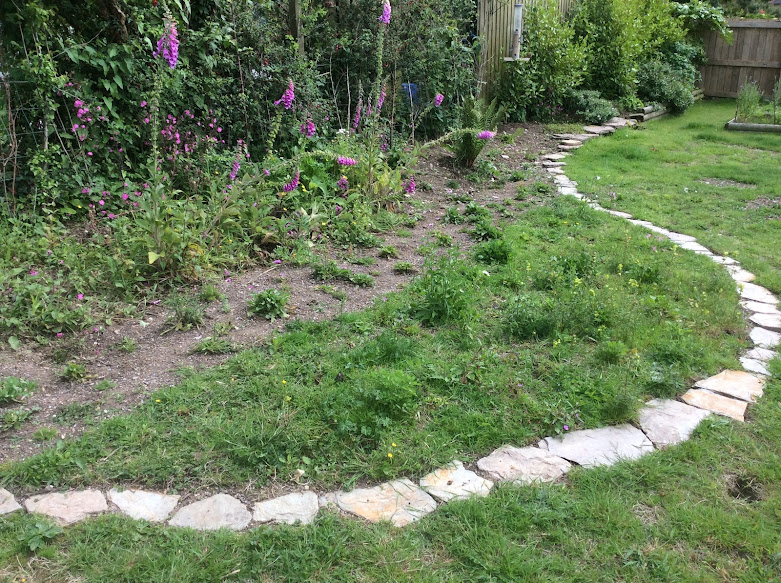 |
| Wildflower Border April 2019 |
This side of the garden faces north west and was in the shadow of next door's tall hedge for much of the day. In 2018, I started letting it grow wild but continued to dig out nettles, thistles, docks, couch grass and bindweed. The bluebells were already there (and starting to take over) with a few ferns dotted around and some Buddleia and Crocosmia in between.
 |
| Wildflower Border April 2019 |
In 2019, I started seeing a few Cow Parsleys, Red Campions and Foxgloves, and I also sowed some hedgerow seeds in the gaps between the bluebells. In early spring 2020, my neighbour decided to cut down his hedge to about 2m high, which I was very happy about as it would increase the amount of light across my garden. Most of his hedge is native eg Hawthorn with some Fuschia and Buddleia. Once it was lowered, I decided to plant a similar hedge my side of the wire and we agreed to let the hedges grow together but keep it under 2.5m high. I used 80 bare root plants in total comprising Hawthorns, Blackthorns, Crab Apples, Field Maples, Wild Privets, Hazels and Dog Roses. They've spent this spring settling in (I had to do a lot of watering through many dry weeks) while in front of them I had even more wild flowers.
 |
| Foxgloves in the Wildflower Border in May 2020 |
Now that my border isn't as shady, it's opened up the possibility of a wider variety of flowers that grow well in front of hedges and on field margins. I therefore decided to dig up all the bluebells (a nightmare!) as they are too domineering and spread too much. These bluebells are hybrids rather than the native variety so I don't feel bad about it and I know it'll take years to uproot every bulb but the majority have gone.
 |
| Red Campion and Cow Parsley in the Wildflower Border May 2020 |
I have also removed the Buddleia and Crocosmia as although they are good for pollinators, they spread too much and will reduce the space for wildflowers. The Buddleia also casts too much shade and as my neighbour has some, the butterflies will be happy.
I have now extended the width of this border out into the lawn area in two large curves edged with local stones (recycled from a neighbour's garden).
 |
| Wildflower Border June 2020 |
 |
| Wildflower Border June 2020 |
This part of the lawn was intended to be a shady meadow so it already has some Yellow Rattle & wildflowers in it but I've dug more out of the lawn to put inside the curves and added some plug plants (some bought recently and some potted on from last year). The resulting holes and bare patches in the lawn will be repaired in September. The bare patches in the border will be sown with more wildflower seed and some meadow grass as I intend to maintain it like a perennial meadow.
 |
| Wildflower Border June 2020 |
Some of the wildflowers have bloomed eg Ragged Robin and White Campion:
 |
| Ragged Robin June 2020 |
 |
| White Campion June 2020 |
Successes:
- Reducing the hedge height has increased the light;
- Planting a mixed, native hedge on my side;
- Increasing opportunities for diversity by removing dominant plants;
- Creating a curved, wider border as an extension of the hedge border.
Lessons Learned:
- The soil on this side of the garden is deeper and less stony;
- Don't be a wimp about removing 'good' plants if they threaten diversity;
- Keep on top of brambles and bindweed as they grow up through the hedge;
- Bluebell bulbs are deep and I'll have to keep digging them up for a few years.
Comments
Post a Comment